Every week CBD’s Editor in Chief Pete DeCourcy asks the question and the crew (and special guests) give their answers, we’ll be doing this for 52 weeks. Tip of the hat goes to the gang at Scans_Daily for the inspiration.
Today’s Question: “What’s your take on J. Michael Straczynski leaving monthly comics and do you agree with his statement that “graphic novels… along with the occasional high-visibility miniseries. [are where] I think that the business is going“?”
Shelley Smarz (Comic Book Daily’s resident Comic Book Goddess)
 On the one hand, I definitely think that the industry is hedging its bets with the whole digital distribution thing. What JMS is suggesting is a way of staying in print while encouraging people to adopt digital comics. But I don’t think that the industry can abandon monthly releases altogether.
On the one hand, I definitely think that the industry is hedging its bets with the whole digital distribution thing. What JMS is suggesting is a way of staying in print while encouraging people to adopt digital comics. But I don’t think that the industry can abandon monthly releases altogether.
Sure, they can abandon printed monthly comics and, as much as it pains me to say it, the production of printed periodical/monthly comics is going to end sooner rather than later. Sales have been dropping over the last year or so even though DC and Marvel are dropping their cover prices for some (hopefully, most) of their titles to get more people to buy their books (seriously, who thought that raising the cover price of non-event monthlies to $3.99 in the worst economic downturn since the Great Depression was a good idea?). I’m very selective when it comes to buying monthly comics. I prefer to read the majority of the books I follow in graphic novel form. But that’s a personal preference; a lot of people love their monthlies and will revolt if they’re taken away from them. There’s the rub. How do you do what JMS is proposing without alienating a good chunk of your consumer base? That’s where things get really tricky.
ICv2 notes that both graphic novel and monthly comic sales were down 4.74% from 2009. One of the ways in which the industry could help mitigate this decline is to consolidate its monthly comic and graphic novel sales – that is, by switching exclusively to TPB/graphic novel OR monthly/periodical comics production. Not everyone collects the individual issues and the TPB/graphic novel, so there’s some cannibalization in terms of sales between the two.
The only problem is that, even though I’d put money of the fact that the industry would be more likely to choose graphic novels/TPBs over monthly comics, they can’t just drop one for the other exclusively, but they can change how one is distributed. Strategically, if they were to do this (sacrifice one printed form in favour of the other), it would be a very efficient way to transition readers to digital distribution (for those who are willing and/or able).
But they’d still have to offer one form in print; it’s too early to force everyone to go digital. Without going into a big long discussion about the technology adoption cycle, it’s going to be awhile before some people accept and adopt digital comics and consume them exclusively, even if the industry stops offering printed monthly issues or TPB collections of a title. Until the point where digital distribution is the norm (and I would say the norm would be at least at that point where about 85%-90% of people are consuming daily newspapers digitally and the market is absolutely saturated with affordable digital readers) he industry cannot stop producing print altogether. If printed monthlies disappear, publishers will eventually have to release a TPB for those late adopters of digital tech or for those who still like having a printed volume on their bookshelves.
Scott VanderPloeg (writer of CBD’s Bound Together column; his ramblings can be found blogged at eBabble.)
 I stopped collecting monthly titles about a year ago and haven’t looked back. I don’t need to wait months on end for creators to get the next 22 pages out : being able to buy a complete story in a nice package and to enjoy the story at my pace, just like every other type of book, is a rewarding experience.
I stopped collecting monthly titles about a year ago and haven’t looked back. I don’t need to wait months on end for creators to get the next 22 pages out : being able to buy a complete story in a nice package and to enjoy the story at my pace, just like every other type of book, is a rewarding experience.
The market has always enjoyed graphic novels and one shot stories: unfortunately these works weren’t getting out to the masses. Graphic novels are firmly entrenched in North American culture at this point with solid distribution to a wide array of retail outlets.
The serial graphical format has had a good long run but in its print form time has run out. Ironically digital media can save it as it’s the perfect medium for serialized fiction.
Kevin Boyd (Director of the illustrious Joe Shuster Awards Committee)
 I think it’s a premature statement, and one pregnant with irony. While yes, I do believe that Graphic Novels continue to play the most significant role in the publishing strategies of the bigger publishers, I also think that the monthly comics — at least the kind of monthly comics that JMS writes for – such as Superman and Wonder Woman — are not going to cease publication anytime soon, despite what people have been saying for decades, including here.
I think it’s a premature statement, and one pregnant with irony. While yes, I do believe that Graphic Novels continue to play the most significant role in the publishing strategies of the bigger publishers, I also think that the monthly comics — at least the kind of monthly comics that JMS writes for – such as Superman and Wonder Woman — are not going to cease publication anytime soon, despite what people have been saying for decades, including here.
I think perhaps that JMS has decided is that *he* should stick to writing graphic novels and not monthly comics (whether we are talking about print or digital it doesn’t matter here), because (a) the monthly grind does not seem to be working for him as he’s become accustomed to delivering scripts late and (b) it’s a bigger financial reward – the payout from a single best-selling graphic novel like Superman: Earth One is considerably higher than working on the equivalent monthlies as it reaches a larger audience beyond the niche market of comic book buyers — it gets wider distribution, and (c) a bigger creative reward as he controls the deadlines — he gets to pick his artistic team with his publisher, and they work on adapting his script until the book is done. He doesn’t need to worry about missing deadlines and meeting shipping schedules, he doesn’t need to construct his story to have a dramatic break or pause ever 22 pages, nor does he need to worry about fill-in artists if the regular artist can’t meet the deadlines. He gets a bronchial infection and the book doesn’t come out, instead of dozens of fans on the internet crucifying him for being late on his monthly grind. Plus the publisher won’t schedule the book until the script is turned in and the artist has begun drawing it. It’s a win-win for the writer and publisher. The only disappointed person might be the artistic team, who lose their regular paycheck for monthlies and have to do what they can to complete the graphic novel as quickly as they can so they can get paid and sell the originals.
On a similar note, Canada’s own – the cartoonist known as Seth – made a similar declaration a year or more ago to the Guelph Mercury when he announced the end of his long-running series Palooka-Ville, published by Drawn & Quarterly, as a comics periodical and that he would instead shift to produce a single annual 80-page hardcover edition of his comics, starting with the 20th edition, which came out in October 2010.
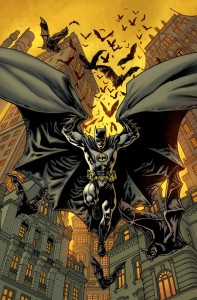 I wouldn’t be surprised if more creators don’t follow suit. It’s definitely the path that auteur creators like Seth have been heading down for the last decade or so. You reach a point where it makes no sense to have your comics serialized low-selling 22 page snippets, especially when you are constructing the story to be inevitably collected as a graphic novel. While it may take Seth years to produce a single new graphic novel (so he needs serialization to keep going financially which is why the new format Palooka-Ville is more of an artistic anthology), a writer like JMS doesn’t need to worry about that. He constructs a story, pitches it, it gets approved, he writes the script and turns it in and moves on to the next idea.
I wouldn’t be surprised if more creators don’t follow suit. It’s definitely the path that auteur creators like Seth have been heading down for the last decade or so. You reach a point where it makes no sense to have your comics serialized low-selling 22 page snippets, especially when you are constructing the story to be inevitably collected as a graphic novel. While it may take Seth years to produce a single new graphic novel (so he needs serialization to keep going financially which is why the new format Palooka-Ville is more of an artistic anthology), a writer like JMS doesn’t need to worry about that. He constructs a story, pitches it, it gets approved, he writes the script and turns it in and moves on to the next idea.
That being said, there will always be serialized adventures published in some format of the mainstay characters – Batman, Superman, Wonder Woman, Spider-Man, The Hulk, Avengers, X-Men and so forth because the periodicals serve a slightly different purpose as (a) a means to subsidize collected editions – the work is paid for and earning money before it is inevitably collected and (b) they are regular promotional vehicles for marketing their properties — a perennial advertisement for their characters which can be marketed to other media such as film, television, kids books, posters, toys, drinking glasses, paper plates, stationary, etc. So JMS leaving for greener pastures simply means that someone else will get the job of writing a serialized story for the periodical format.
Anthony Falcone (Writer of Whosoever Holds This Hammer)
I’ll try to stay on topic and answer the question at hand and not talk about how JMS is kind of a douche.
There will always be monthlies. It is how you get new readers interested. If hear that this Batman guy has some pretty cool stories, I am more likely to spend $3 than $20 to find out if I like his story. What will continue to happen is that Graphic Novels and Tradepaperbacks will dictate how a story is told. Everything is a 5 part story now, whether it needs it or not.
Collected editions are part of the comic book landscape are not going away, but they will not replace the monthly sale of a book (we might only have monthlies online, but they will never disappear). People do love the convenience of reading a collected work, but you need the original issues first.
It would be like if a television show just came out on DVD without ever being on the airwaves. Not going to happen.
Chris Howard (From Egesta Comics, one of the masterminds behind the fan favourite webcomic series Dressed For Success)
I agree, there will likely be a need for serialization at the two ends of the spectrum. The Big two will likely always have some form of running series for it’s characters. Then in the middle will be OGN’s from both character factories like Marvel, DC, Image, Dark Horse etc, and creators working in an arrangement more like traditional book publishing. Many of these types are already doing this, see the example of SETH. At the other end are the new creators. With no catalogue of work, they will do what many are doing now with webcomics. Build up and share a body of work for free, on-line, in the hopes of maybe moving to either a book deal or working for a publisher. There will also be some who will continue to work as many are now, self-publishing their collected serialized work.
For the first category, I had a thought. If I subscribe to the say ‘Batman’ serial, and it’s a year-long subscription, for $5 I can read it on-line or whatever. But for $30, I get to read it on-line and also get a physical version when it’s done. Sort of a physical archive. I kinda thinking of the DVD box set of a TV show or the way you could get a year of National Geographic bound.
The middle is the real area of change and growth. And it’s mostly exciting because it seems to encompass much more than the comic shop crowd. It’s Scholastic book clubs, Walmart, book stores and the New York Times. (YAY Kill Shakespeare.)
Jill Nagel (Our Correspondent from the Toronto Cartoonists Workshop)
I work in a comic book store and I see people debate over trades all the time. Do I buy my monthly issues or do I wait until there is a collection? Some people choose one way, and some choose the other. I know I’m guilty of buying both once in a while. i can see where Straczynski is coming from. Graphic novels are easy to sell. Take a look at your local book store. When we were younger we had to search out single issues to read a comic story. Now nearly every books store has a graphic novel section where you can pick up a full story, sit down, and read it. Anyone can pick up a copy of Scott Pilgrim or Asterios Polyp without having to worry about finding next month’s issue. Hell, most HMV locations sell trades now. The book format allows comics to be sold in big box stores and have a wider distribution. The industry is trying to wider their readership by expanding their visibility. Whether is will work or not is anyone’s guess.
On the other hand, I believe that the core comic readership will not give up their monthly comics without a fight. We may see fewer titles in the future, and that doesn’t have to be a bad thing.

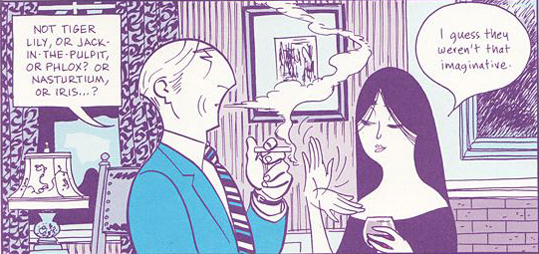
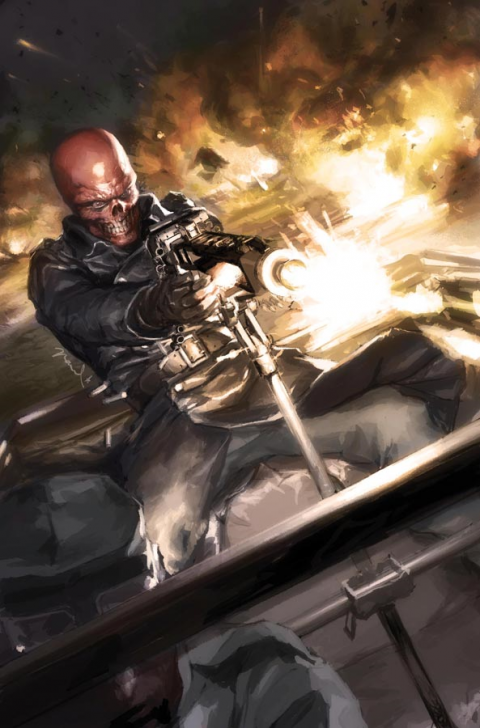
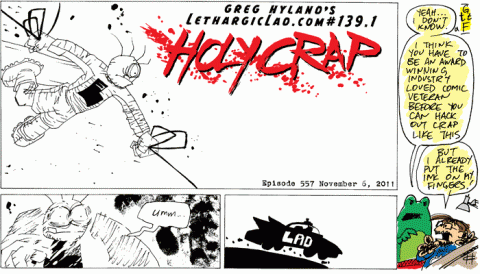
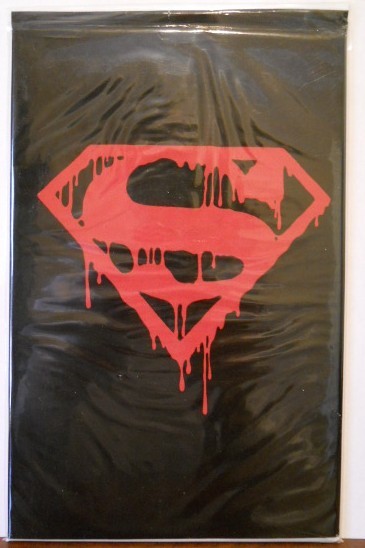
I’m surprised no one has clued in to the fact that JMS didn’t make some grand decision to leave monthlies in favour of writing graphic novels. The guy was flat out fired. DC won’t come out and say that of course, but I think it’s there if you read between the lines.
This is a guy who has been chronically late at some point in his run on every serial comic he has ever done since Rising Stars in 1999. I don’t understand why DC ever put him on two of their flagship titles in the first place without some expectation that he would do the same thing he has done for 10 years: not hand in scripts.
So yeah, from a comic writer incapable of actually producing monthly comics, I take the statement that serial monthly comics are not the way of the future with a grain of salt.